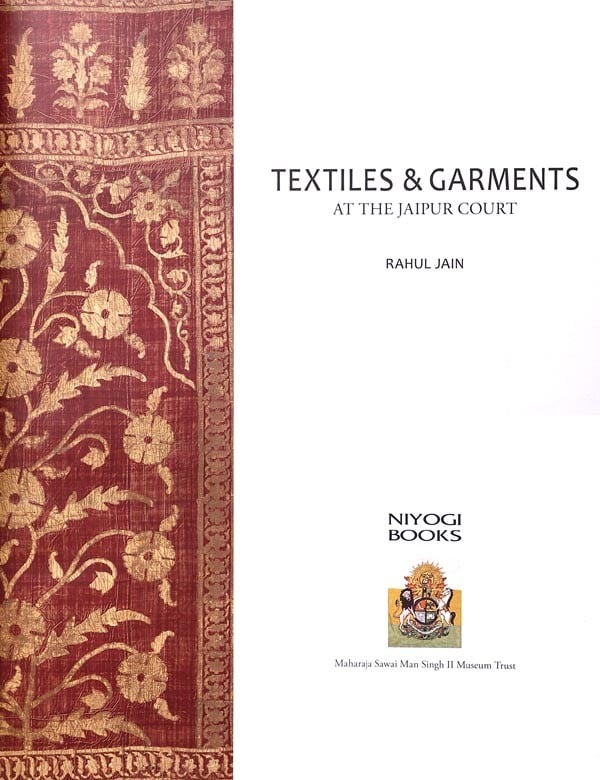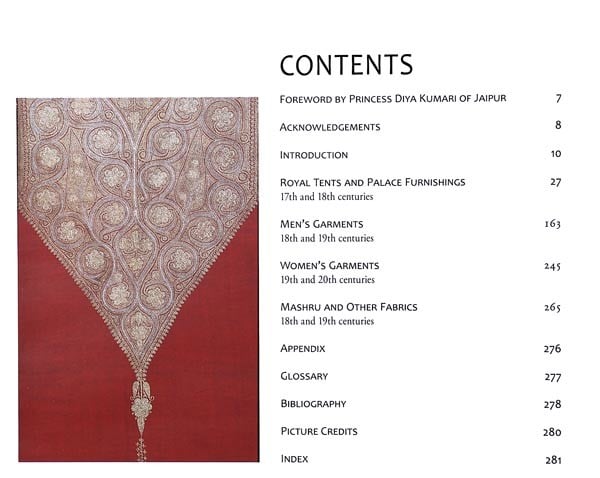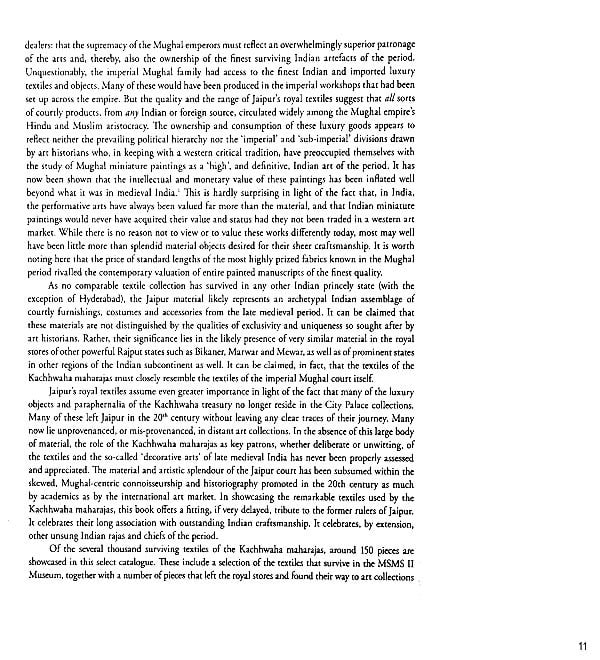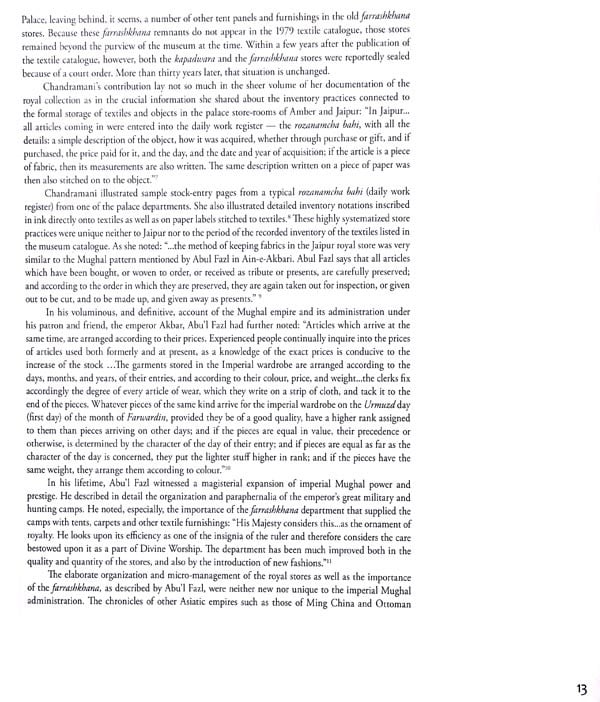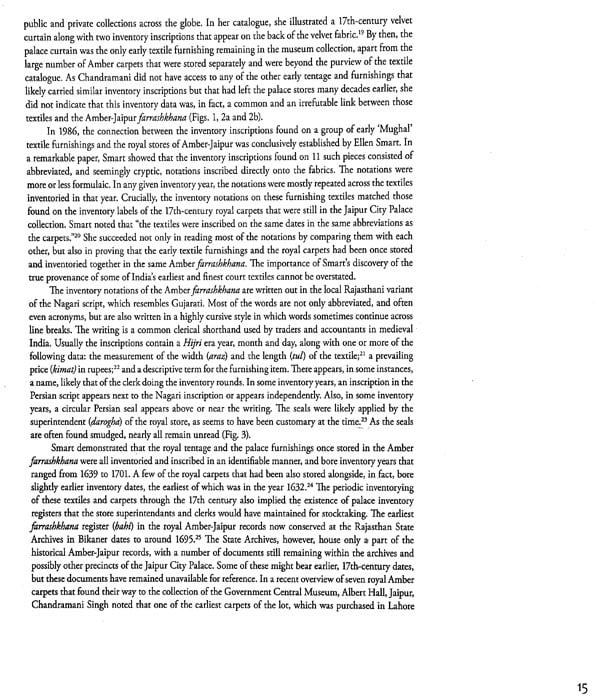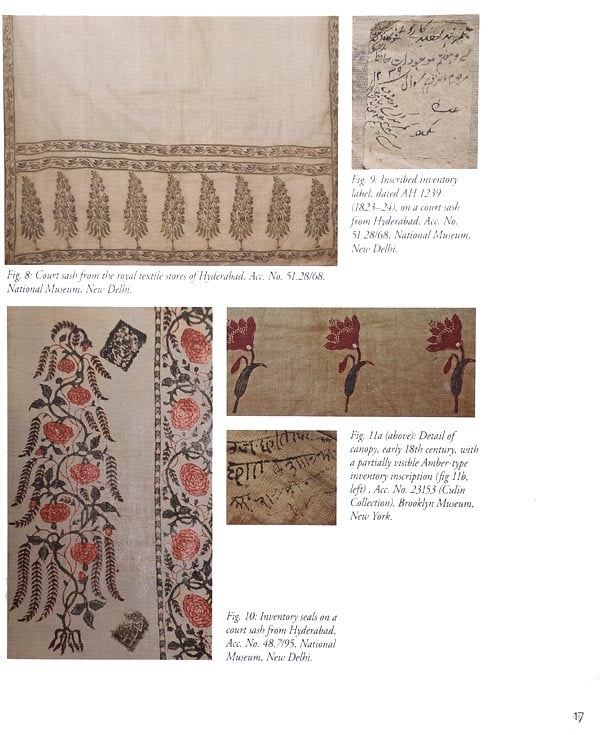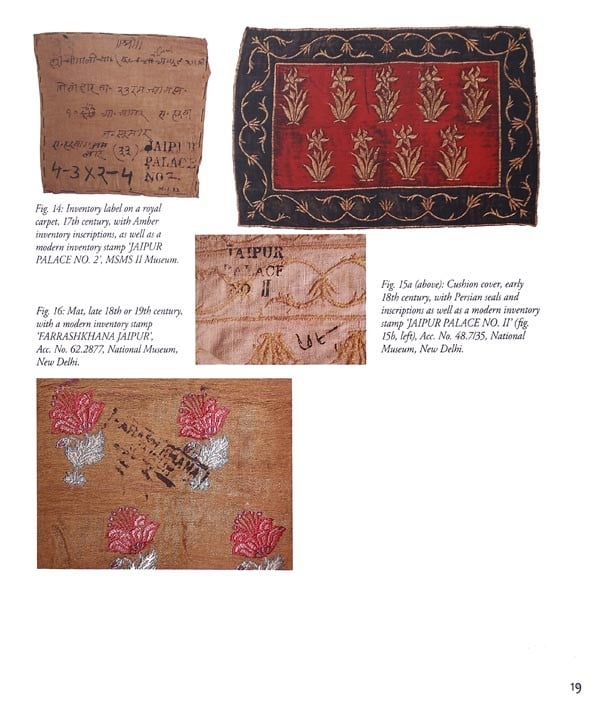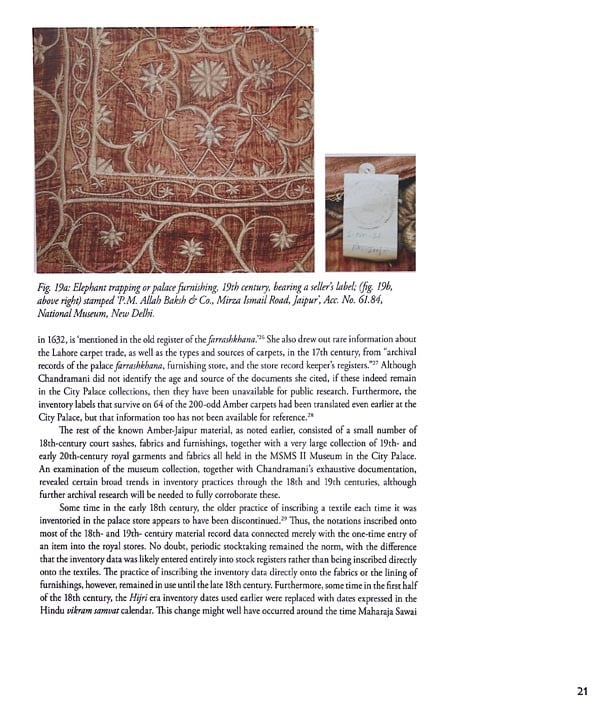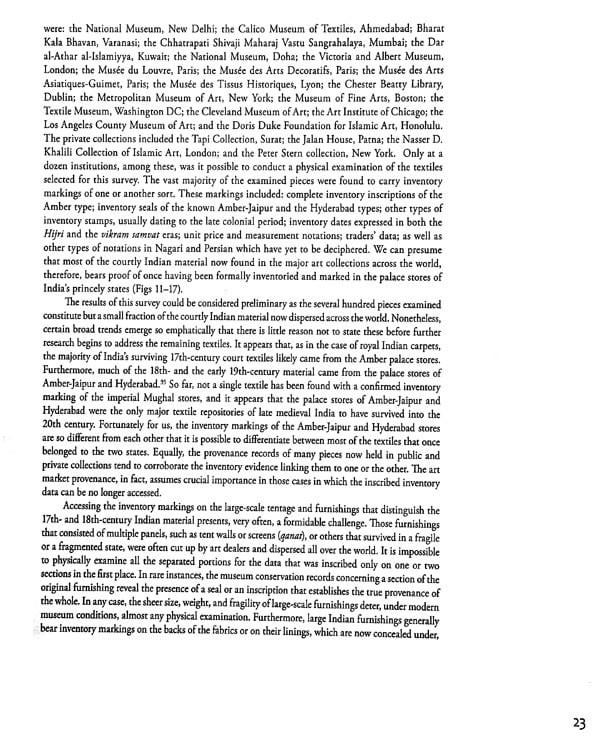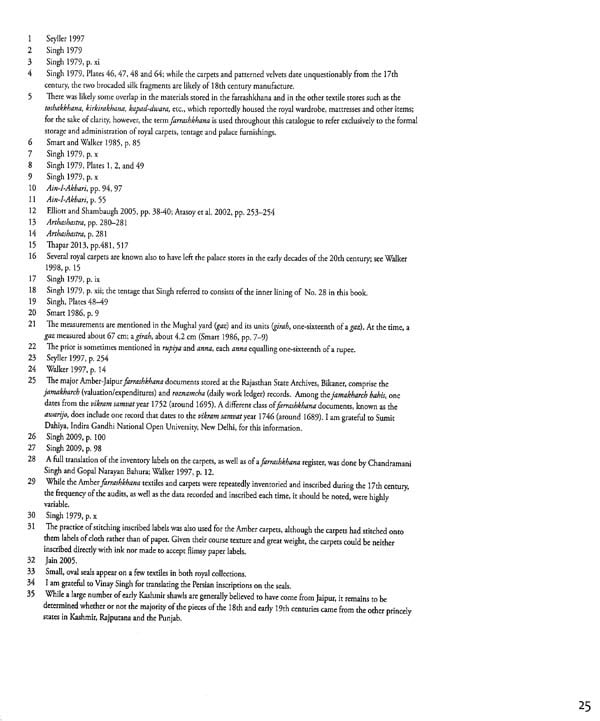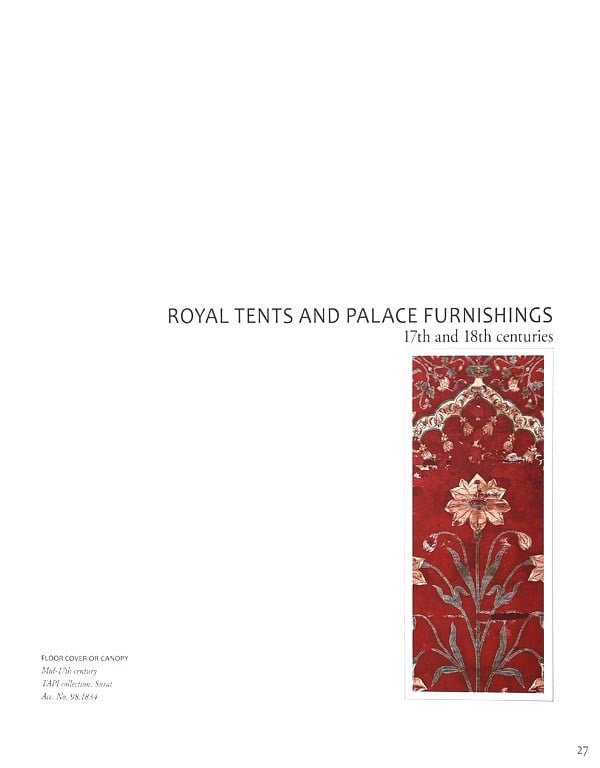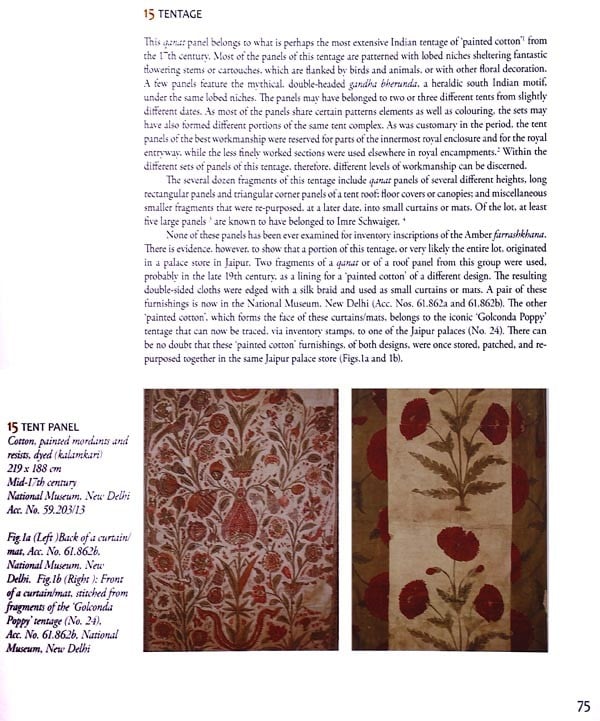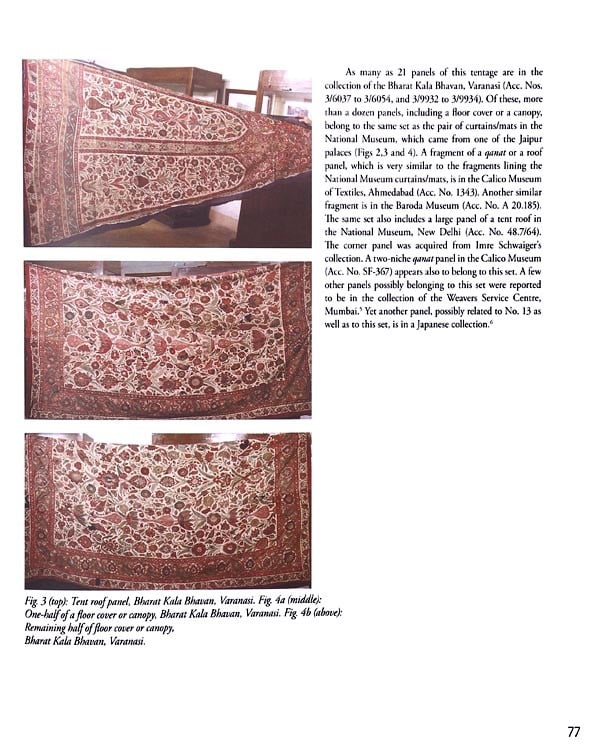
Textiles & Garments- At the Jaipur Court
Book Specification
| Item Code: | AZE855 |
| Author: | Rahul Jain |
| Publisher: | NIYOGI BOOKS |
| Language: | ENGLISH |
| Edition: | 2019 |
| ISBN: | 9789385285042 |
| Pages: | 284 (Throughout Color Illustrations) |
| Cover: | HARDCOVER |
| Other Details | 13.00x10.00 inch |
| Weight | 2 kg |
Book Description
This is the first comprehensive overview of the court textiles of the Kachhwaha Rajput court of Amber-Jaipur, which were among the finest ever produced in India. While a few thousand historical pieces survive in the Maharaja Sawai Man Singh II Museum in the City Palace, Jaipur, many now reside in art collections across the world. Over 200 full color images showcase some of the most remarkable court textiles remaining in Jaipur and preserved elsewhere.
This is the third book in a series that is intended to bring parts of the Museum's collections to wider audiences and to encourage scholarly study of them. With its beautiful illustrations and well informed text, I am sure that it will bring delight and understanding to many readers. I hope, also, that it brings fresh inspiration to Jaipur's renowned textile artisans and designers.
Jaipur's popularity as the capital of Indian craft stems from a strong revival of its artisanal skills and products in the late 20th century. This resurgence, spearheaded by visionary modern entrepreneurs. arts and designers, drew from a long history of development and flowering of the arts under the city's former Kachhwaha Rajpur rulers. Through the grand public arts projects of Maharaja Sawai Ram Singh 11 (1835-1880) and Maharaja Sawai Macho Singh 11 (r.1880-1922), the promotion of local artisanal kills and techniques can be traced back as far as the founding of the city in 1727. It is believed that the re-settlement of skilled artisans and an elaborate re-organization of court workshops were key programs of the city's founder-builder Maharaja Sawai Jai Singh II (r. 1699-1743).
There is reason to believe, in fact, that the roots of this long process of artistic consolidation lay in an even earlier period of Kachhwaha rule. That phase spans the remarkable lives and careers of Raja Man Singh 1 (r.1589-1614) and Mirza Raja Jai Singh (r. 1621-1667). Both Raja Man Singh and Mirza Raja Jai Singh were leading luminaries and military commanders at the imperial Mughal court. They ruled from Amber, the older Kachhwaha capital near Jaipur. During their long military tenures in north, east and central India, they built numerous forts, palaces and temples, in addition to building extensively within their Amber dominions. During their reigns, the Kachhwaha treasury accumulated some of the finest and most spectacular Indian textiles and carpets, as well as other luxury objects, known to us today. While no doubt some of this material came in as honorific gifts and spoils of war, the archival evidence, such as that available for the royal Amber carpets, suggests that much may have been independently commissioned or purchased. The modern crafts of Jaipur contend, therefore, with the Kachhwahas' formidable material and artistic legacy.
The prestige of the Kachhwaha maharajas is perhaps more spectacularly reflected in the textiles used at their court than in any other decorative medium. The textiles and fragments that survived in the royal stores of Amber and Jaipur number several thousand pieces. These span more than 350 years of Indian craftsmanship: from around the late 16th to the mid-20th century. Of these, more than 2,700 textiles still survive in the collection of the Maharaja Sawai Man Singh II Museum, housed in Jaipur's City Palace. The remainder, numbering in the many hundreds if not a few thousand, are now scattered in public and private collections across the world. Together, the two lots form the largest and finest group of court furnishings and apparel known to have belonged to an Indian royal house. In fact, it includes so many of the finest Indian textiles known in their respective techniques that the corpus poses significant, and unsettling, questions about the patronage, manufacture, ownership and use of courtly textiles in late medieval India.
**Contents and Sample Pages**
